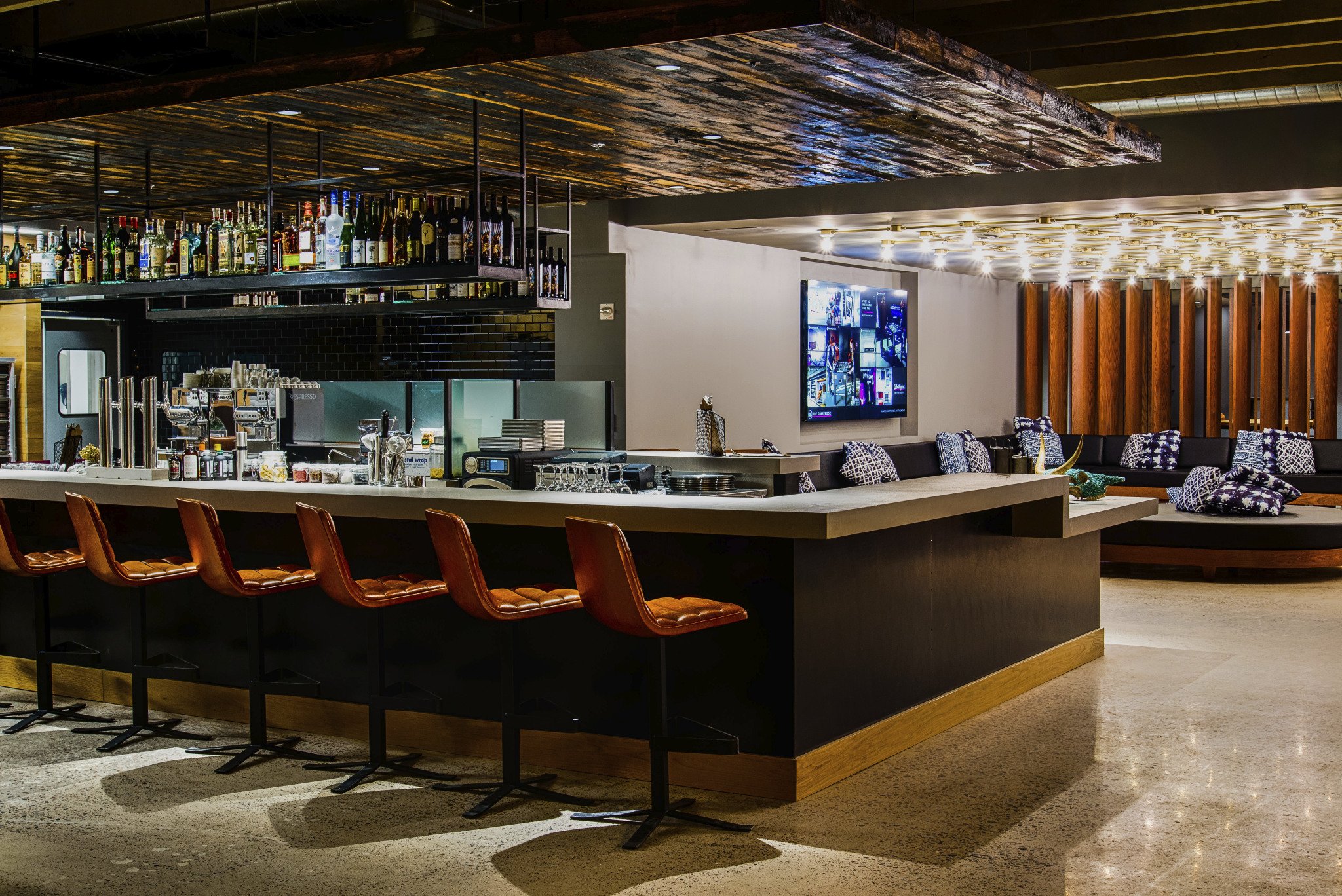The days of hotel bars as dim watering holes for solo business travelers are long gone. “Today's hotel bar encompasses all of the lobby area, making every seat sellable, and functions as a social center, appropriate for work or play,” said Michael Suomi, principal and interior director of design at Stonehill & Taylor.
Kellie Sirna, principal at Studio 11 Design, said that the biggest change in bar design is making the bar a more prominent part of the lobby. “We’re taking down walls between the bar and lobby, which in turn blurs the lines and brings the energy from the bar area into the lobby,” she said.
Some millennial-focused hotels are emphasizing the bar as the leading element of the lobby. Marriott’s rapidly growing Moxy brand, for example, has eschewed the check-in desk entirely and combined it with the lobby bar, letting guests get their room key and a complimentary drink at the same time. “We like to think of ourselves as a bar with rooms upstairs,” said Vicki Poulos, global brand lead of Moxy Hotels.
As such, when creating the brand, the Moxy team focused on the bar first and developed the rest of the lobby around it. “It’s a hybrid approach to have check-in at the bar, but if we’re going to be a brand that lives in the public spaces, the bar is the anchor of our public space,” according to Poulos. Moxy’s bars have laptops behind them for when the hotel team needs to get work done, but the overall vibe is meant to evoke a communal gathering space rather than a reception desk.
The Details
In a tech-driven world, the question of how much technology to include in a hotel bar should be at the front of a designer’s mind when beginning a project. “It’s better to know upfront what technology needs to be incorporated,” said Kimberly Trueba, EVP at Forte Specialty Contractors. In casual bars, wall-mounted TVs are largely ubiquitous, but can harm the overall aesthetic. Still, a designer needs to decide early on if TVs will be included, and figure out where the best location would be. “If they’re added after, it’s noticeable,” she said. “The beauty of today is that it’s much easier to design flat screens with Wi-Fi and Bluetooth into bar interiors than it was.”

Similarly, charging ports are a must, and can be hidden at or under the bar, at tables or along the wall. “When I go to a bar or restaurant and I see that they have ports, it shows thoughtfulness,” Trueba said.
Furniture options at hotel bars can include lounge chairs, barstools and traditional tables and chairs. But as business travelers look to blend work with leisure, Suomi noted, a table can serve as a resting place for a drink or as a workspace. At the new Brooklyn Hilton, which Suomi designed, a large communal table dominates the lobby and can accommodate diners and workers.
Lighting is also a vital element for a hotel bar, and as Trueba noted, this is where a lot of venues fall flat. “The most common lighting is downlight, and that’s not always appropriate for a bar,” she said. Since lighting options have gone from incandescent to fluorescent to LED in relatively few years, designers need to know what type of lighting will be best for each venue. “The best lighting in a social setting is lighting that washes your face from the side, because downlights create harsh shadows,” Trueba said. “That’s not flattering for anyone.”
Lighting should accentuate the bar’s key elements, she said, whether those elements are the texture of the walls or key artwork. “If it’s not well lit, you are putting money into something people won’t notice,” she said.
“Bars located in main public areas of hotels need clever and easy ways of concealing and securing liquor using panels, screens, rotating cabinets or other lower-tech mechanisms,” Suomi said. “Many bars are positioned and designed to do double duty as an a.m. breakfast buffet and p.m. cocktail service. Lighting and lighting control technology can provide dramatic visual transformation between these different uses.”
